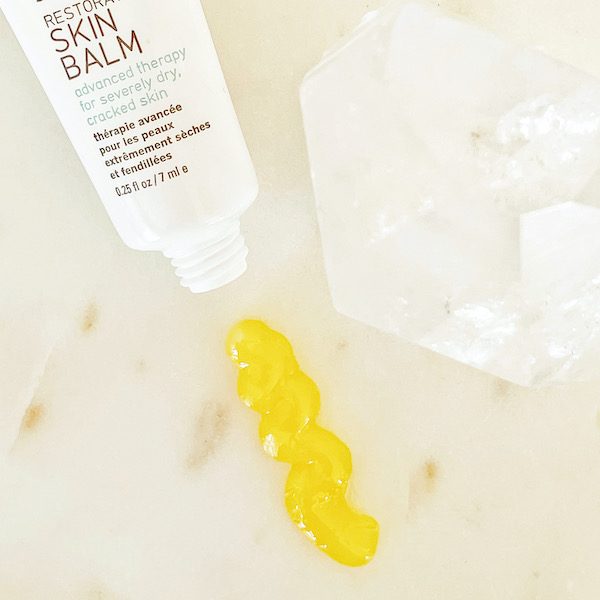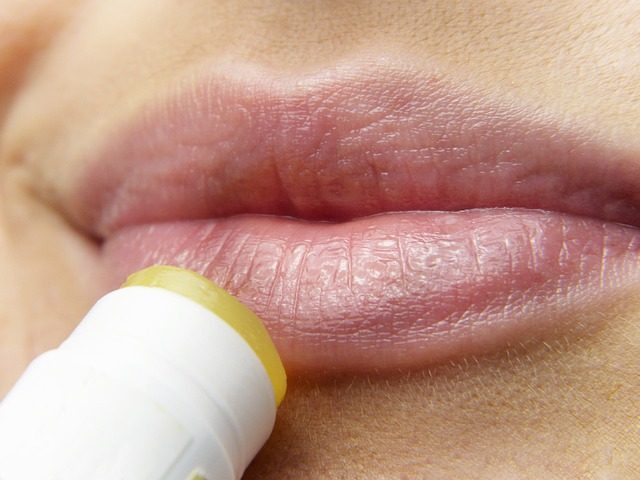Is it possible for lips to be allergic to lipstick? Or lip balm?
If you notice dryness, flaking, irritation, redness, or other similar symptoms, it may be time to check your lip products.
Lips allergic to lipstick: what are the symptoms?
It can be difficult to tell the difference between chapped, irritated lips and an allergic reaction to the lips.
Here are the signs to look out for that may indicate you are having an allergic reaction to your lip care products:
- Swelling of the lips or the area around the lips
- Small blisters
- Burning and itching
- A red, irritated reaction that may spread to the face and neck
- Redness, flaking or dryness and itching that stops as soon as you stop using the product
- Redness occurs on fair skin; on dark skin, parts of the lip may turn dark brown, purple or reddish
- Crusting on the corners of the mouth
A lip allergy can be difficult to diagnose. Unlike food or other types of allergies, it may not develop immediately after you apply the product. Instead, the response may be delayed for hours or even days.
However, you can take into account the severity of your chapped lips. If your lips are a little dry, this is probably not the cause of an allergy. But if you feel like you have extremely chapped lips with a lot of redness and flaking, it might be time to take a look at the products you’re using.
Lips allergic to lipstick: what happens
An allergic reaction is a sign that your immune system sees something in your lipstick or lip balm that it thinks is dangerous to you.
Even if you have been using the product for months or years without any problems, if you suddenly notice that your lips appear irritated, your immune system may have changed its mind about the product.
This can happen simply as a result of repeated exposure. But it can also occur if the skin barrier on your lips is damaged. Maybe you have dry skin or flakes on your lips. This allows the ingredients in your lip products to penetrate the skin better. What may not have bothered you before are now more “visible” to the immune system due to the damaged skin barrier.
The immune system responds to this perceived threat by sending a variety of immune cells to the site of the invasion: your lips. This causes the redness, dryness, inflammation, and other symptoms you may experience.
Scientists are still not sure why your immune system responds this way. However, we do know that some ingredients are more likely to trigger a reaction than others. According to DermNet– a world-renowned online skin resource – lipsticks and lip care products “are the most common cause of allergic contact cheilitis in women.”
Allergic contact cheilitis is an allergic reaction that causes inflamed lips. It usually affects the outer lip or the area where the skin and the red lip meet.
Ingredients that can make your lips allergic to lipstick or lip balm
Although you can develop an allergy to almost anything, there are some ingredients in lip products that are known to cause sensitivities more often.
Ingredients in lip products that can cause allergic reactions include:
- Chemical sunscreens such as benzophenone-4, octinoxate and oxybenzone
- Fragrances
- Flavorings
- Preservatives (parabens, formaldehyde, urea, quaternium)
- Artificial colors and dyes
- Occlusive substances (petrolatum)
- Mineral oils
- Exfoliants (salicylic acid and phenol)
If you suspect an allergy, consult your allergy specialist. They can perform skin tests with allergy patches to find possible allergens. You can also try a patch test yourself. Apply a small amount of the product to another part of your skin and wait a few hours or days to see if it reacts.
Keep in mind that the skin on the lips is thinner and more fragile than other areas. So even if other parts of your skin don’t react to a product, your lips could still be allergic to it. If you notice symptoms of redness or extremely chapped lips, stop using the product for several weeks to see if this helps reduce symptoms.

What to do with lips that are allergic to lipstick or lip balm
If you suspect you are allergic to a lip product you are using, follow these tips to help your lips feel and look better.
1. Stop using the suspected product.
This is always the first step in addressing an allergy. Just stop exposing your lips to the suspected allergen. If you’re not sure which one is causing the problem, stop using it for at least a few weeks. That includes lipsticks, lip glosses, lip liners and chapsticks or lip balms.
If one of your products was the culprit, you should notice some improvement within about a week.
2. Use a product that is less likely to cause allergies.
While you wait to see if your lips recover, you need something to moisturize them. What should you use?
We recommend our Repairing Skin Balm. It is a one hundred percent natural, non-petrolatum healing balm that instantly soothes severely dry and chapped skin. Awarded the “Best All-Around Healing Balm” by Healing Lifestyles and Spas, it contains no fragrances or dyes. It uses natural ingredients like calendula and arnica to help heal the skin.
We use castor oil and lanolin in the product for their superior moisturizing properties. Lanolin is often recommended for people who are allergic to other ingredients because it allows the skin to breathe while providing a barrier against moisture loss.
However, if you are allergic to any of these ingredients, try a different natural moisturizer, such as one of the following:
- Pure shea butter
- Pure coconut oil
3. Test your products one by one.
Once your lips have healed, test your lip products one by one. Apply one to your lips and wait at least a week to see if you notice any reactions. If you do, pay attention to the ingredients in the product. Write them down, throw the product away and move on to the next thing.
This process may take some time, but eventually you may have written down several ingredients that were in the products in question. You can compare these lists to see if you find similar ingredients in more than one product. Writing these down will give you a starting list of ingredients to avoid in your lip care products.
Have you noticed any symptoms of a lipstick allergy?
Featured image courtesy of Ron Lach via Pexels.






